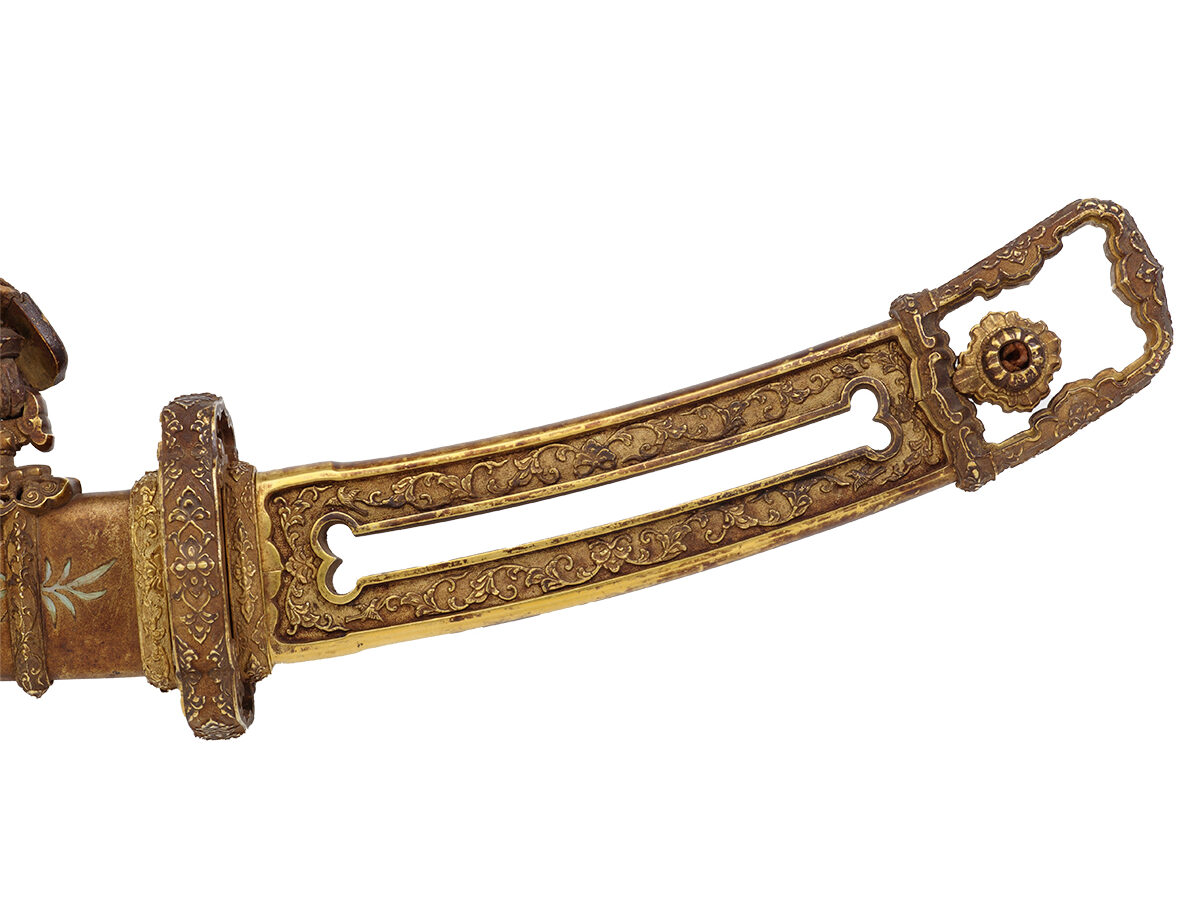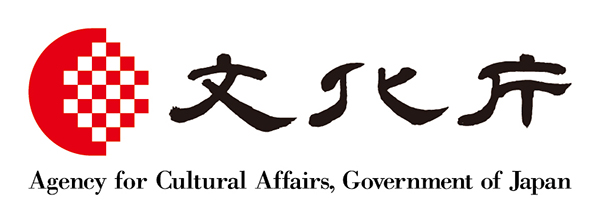【National treasure】
Tachi Sword with Kenukigata-Style Mounting

his ornate tachi sword is a superb example of twelfth-century artisanship. Although its rusted blade can no longer be unsheathed, the sword’s significance lies chiefly in its exquisite fittings and superb example of mother-of-pearl inlay. The ornamental borders on the hilt, handguard, and several other decorative elements are pure gold, and the sword is much heavier than it looks.
The sword was modeled after the ceremonial weapons carried by imperial palace guards. This is especially apparent in the hilt, constructed in the “hair tweezer” (kenukigata) style, characterized by an opening at its center. There are very few such swords from the twelfth century that survive today, and the purpose of the distinctive design is not definitively known.
Each side of the scabbard is adorned from tip to throat with a continuous scene of a cat stalking a sparrow, catching it, and walking away proudly. This scene is rendered in mother-of-pearl inlaid on a background of black lacquer sprinkled thickly with powdered gold. The mother-of-pearl is accented with blue glass, which was an expensive imported material at the time the sword was made. The minute, hand-carved details of the bamboo and the expressiveness of the cat are evidence of the artisan’s expert skill.
In addition to its artistic value, this carefully crafted scene presents a significant historical detail: The cat is depicted wearing a collar, indicating that cats were kept as pets during the Heian period (794–1185). Cats were rarely subjects of art at the time, so it is possible the sword’s motif carries a secondary meaning, such as a visual allusion to a contemporary figure.



この英語解説文は観光庁の地域観光資源の多言語解説整備支援事業で作成しました。
